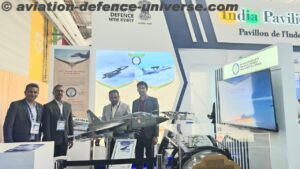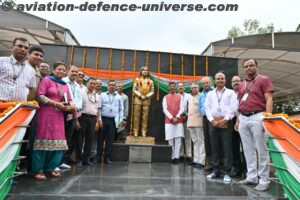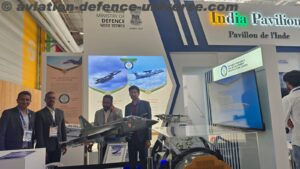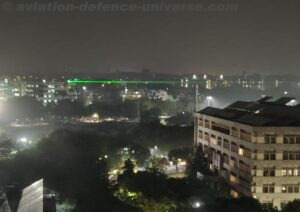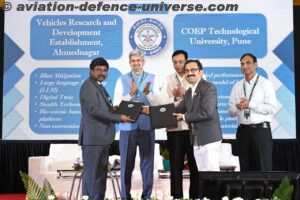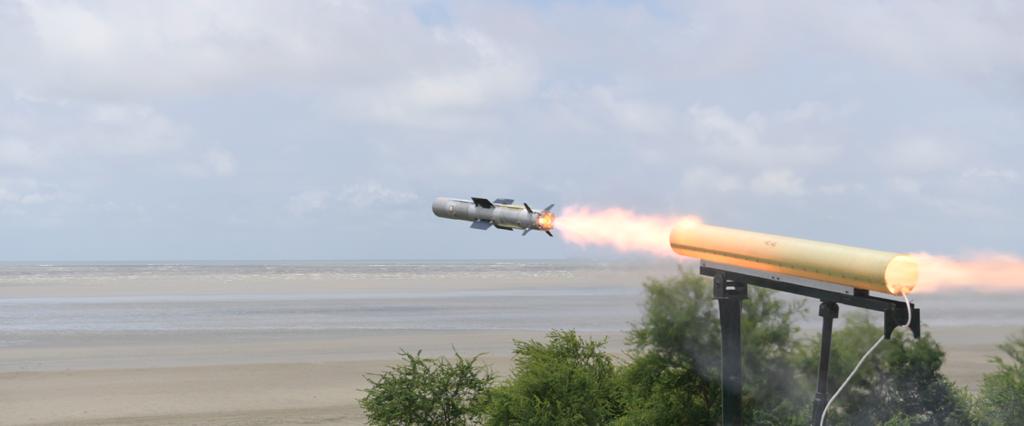
New Delhi. 30 July 2020. The Indian armed forces successfully test fired the helicopter-launched Nag Missile (Helina), now named Dhruvastra anti-tank guided missile in direct and top attack mode. The flight trials were conducted recently at ITR Balasore (Odisha) but without a helicopter.
HELINA (Helicopter based NAG) is a third generation fire and forget class anti-tank guided missile (ATGM) system mounted on the Advanced Light Helicopter (ALH). The system has all weather day and night capability and can defeat battle tanks with conventional armour as well as explosive reactive armour. The HELINA missile can engage targets both in direct hit mode as well as top attack mode. HELINA Weapon Systems is being inducted into the Indian Army (IA). A variant of HELINA Weapon System called DHRUVASTRA is being inducted into the Indian Air Force (IAF).
Dhruvastra anti-tank guided missile is a third-generation ‘fire and forget’ ATGM system installed on the Advanced Light Helicopter (ALH). The Dhruvastra ATGM has all-weather day and night capability and can strike main battle tanks with conventional armour as well as explosive reactive armour.
The indigenously developed ATGM missile can engage targets both in the direct hit mode as well as top attack mode. Defence Research and Development Organisation (DRDO) last year carried out three successful test firings of the NAG (Dhruvastra) missiles in the Pokhran firing ranges.
The Dhruvastra anti-armour guided weapon’s airframe is built with lightweight and high-strength composite materials. The missile features top-attack capability and has high immunity to countermeasures.
The missile is equipped with four foldable wings and has a length of 1.85m, diameter of 0.20m, a wingspan of 0.4m and weight of 43kg.
A blunt nose cone houses the guidance system, while the middle portion accommodates a compact sensor package and the main charge of the warhead. A booster rocket motor is located towards the rear. Four tail fins are fitted at the rear to stabilise the missile while in flight.
A real-time image processor with fast and efficient algorithms is installed next to the guidance section to provide automatic target detection and tracking capabilities. The digital autopilot offers guidance, stability and control for the missile during the flight. Dhruvastra is also outfitted with an electric actuation system for flight control.
The helicopter-launched configuration, helicopter-launched NAG (HELINA), can be fired from Dhruv advanced light helicopter (ALH) and HAL Rudra (ALH WSI) attack helicopter.
DRDO’s laboratory DRDL is responsible for the design and development of state-of-the-art Missile Systems and technologies required for the deterrence and defence of the country. Systems and Technologies developed by DRDL are deployed on underwater, sea, land as well as air based platforms. DRDL is working on several technologies required for the Missiles and Strategic Systems including; Aerodynamics and Airframe Design, Computational Fluid Dynamics, Solid, Liquid, Ramjet and Scramjet Propulsion, Precision Fabrication, Systems Analysis, as well as the Command and Control systems for missile based weapon systems.
MSS Cluster is responsible for the design and development of state-of-the-art Missiles and Strategic Systems required for the deterrence and defence of the country. Various systems and technologies are developed by MSS Cluster.
MSS Cluster consists of five laboratories – DRDL, RCI, ASL, TBRL, ITR, and various others centres for testing, integration and analysis of the systems being designed. MSS cluster is working on technologies like Aerodynamics and Airframe Design; Solid, Liquid, Ramjet and Scramjet Propulsion; Navigation, Control, Guidance and Homing Systems; On-board Power Supply, Warhead Systems, Launch Systems as well as the Command and Control Systems for missile systems.
It aims to empower the nation with state-of-the-art indigenous systems and technologies for missile based weapon systems. Their jobs are to design, development and leading-to-production of systems and technologies for missile based weapon systems deployable from underwater to outer space.
They ensure product support, product upgrade and end-of-life replacement and establish critical infrastructure and facilities for design, testing and evaluation.


































